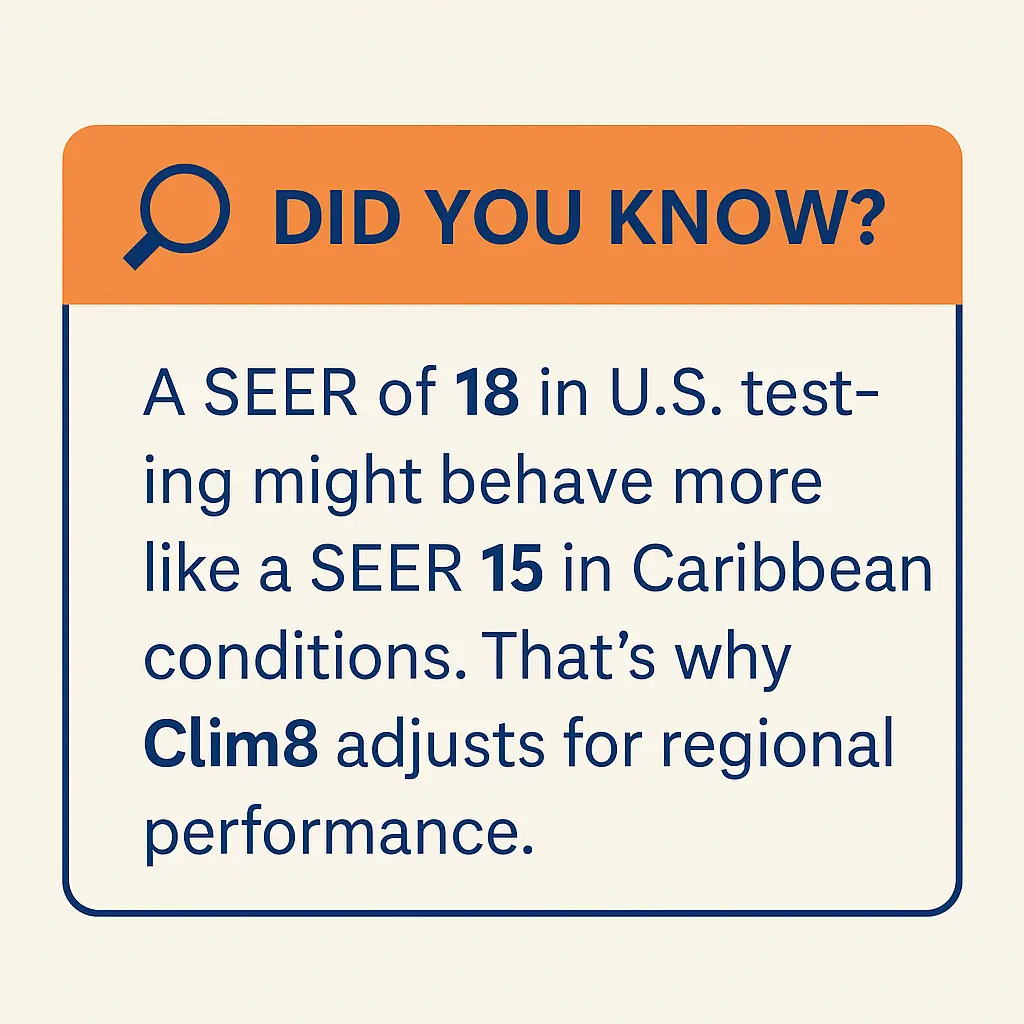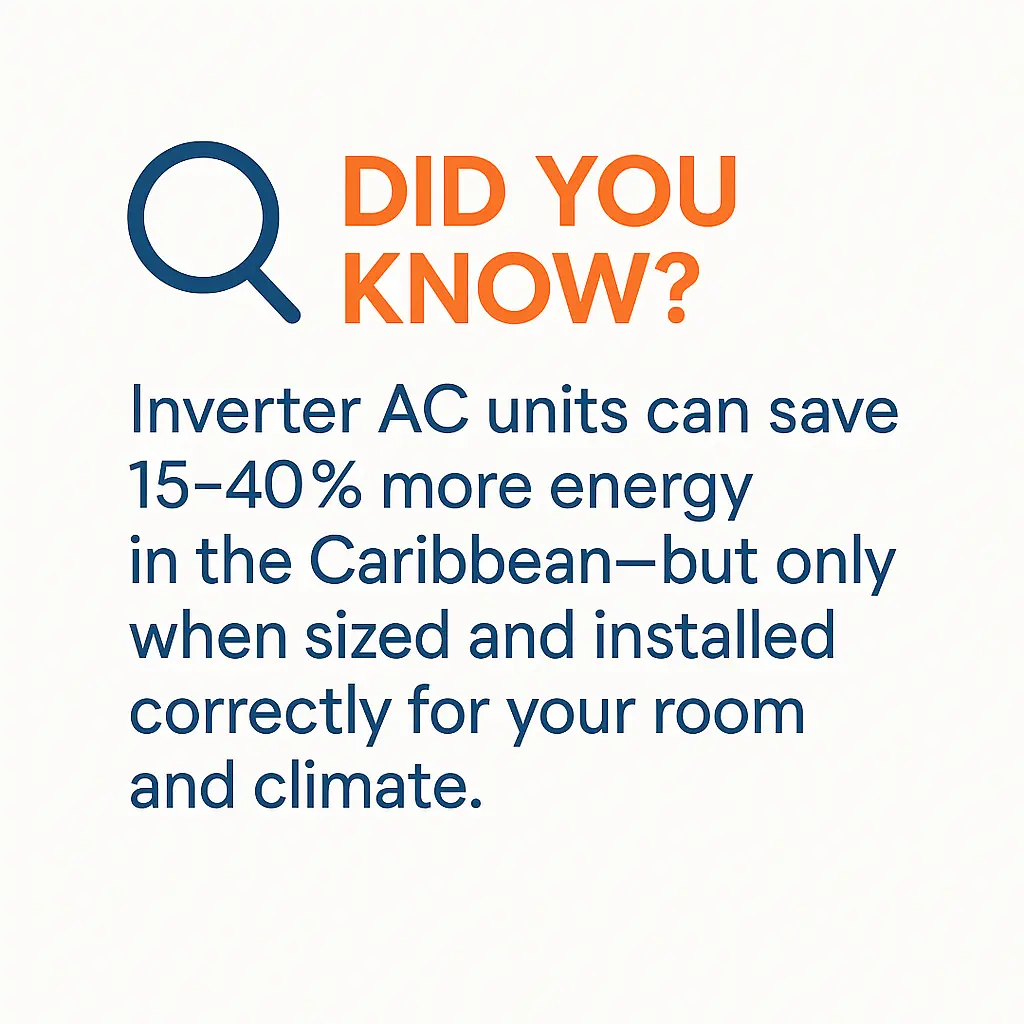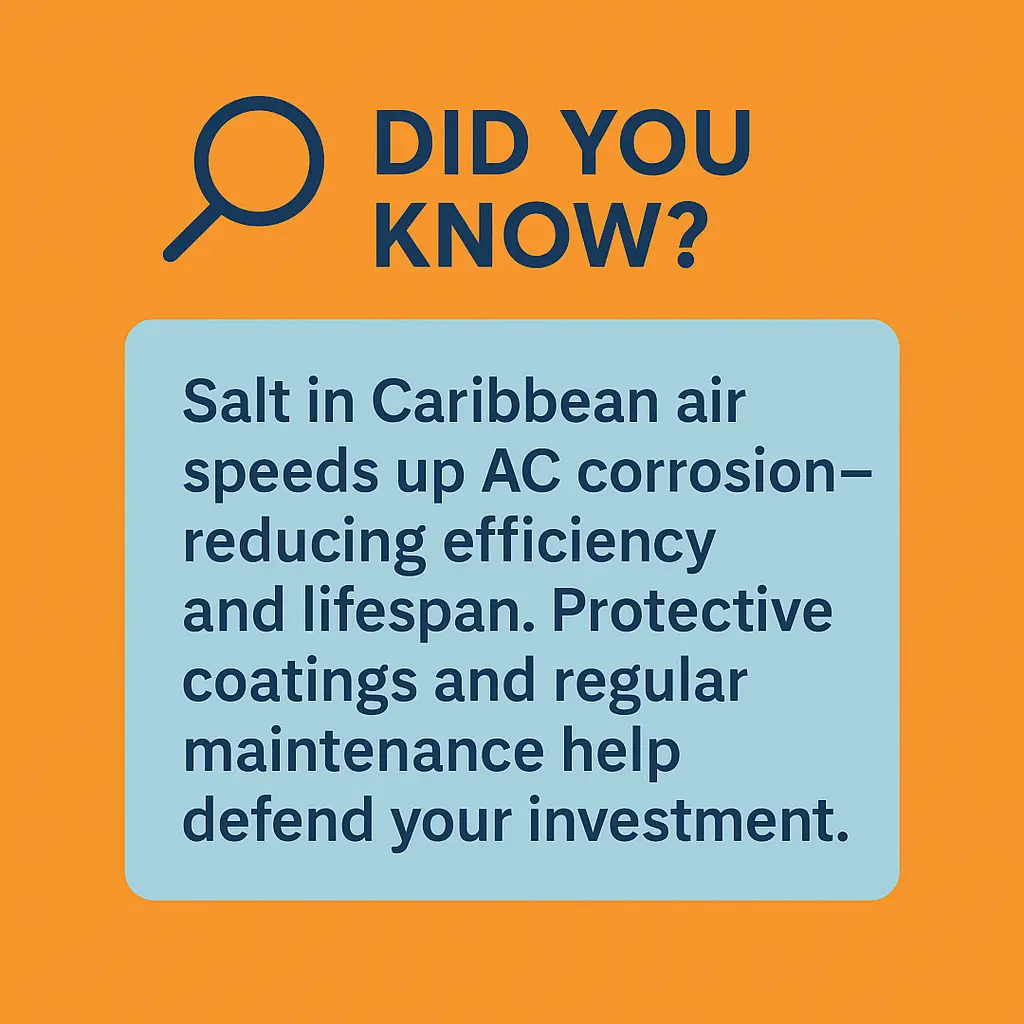Living in the Caribbean means our cooling systems work hard year-round. But there’s an invisible threat that can silently destroy your air conditioner—and it doesn’t get the attention it deserves:
Low voltage.
Low voltage can result from several factors beyond grid instability, including:
- Overloaded circuits from too many appliances or buildings drawing power simultaneously
- Undersized wiring that limits the flow of current to your A/C unit
- Distance from transformers, especially in rural or hillside areas
- Poor connections or corroded terminals in the building's electrical system
Each of these issues can quietly reduce voltage below safe levels, even when power seems 'on' as usual. In addition, voltage fluctuations can occasionally occur in Dominica and across the region—especially during peak demand or severe weather. When voltage dips below a safe range, your A/C suffers—even if it’s still running.
Let’s explore why low voltage can be such a big problem, and how you can protect your investment.
It Can Kill Your Compressor
The compressor is the heart of your A/C. It needs a consistent voltage level to function efficiently.
When voltage drops, your compressor draws more current to compensate. That extra strain can cause overheating, wire damage, and total compressor failure.
This is the most expensive part to replace. If it goes, you're often better off buying a whole new unit.
Poor Cooling & Long Run Times
Low voltage makes your system sluggish. The fan spins slower. The compressor struggles.
Your space takes much longer to cool—or never gets there. Meanwhile, the unit runs longer, using more energy and wearing down faster.
Board & Electronics Damage (Especially Inverter Units)
Inverter A/C units are highly efficient—but also more sensitive. Their smart circuit boards regulate cooling.
Low voltage can glitch or burn out these boards, leading to service calls, downtime, and expensive replacements.
Many inverter brands advertise a wide operating voltage range (e.g., 180V to 240V). While this sounds reassuring, here’s what it really means:
- The unit can function within this range under ideal conditions
- It does not mean it's safe or optimal to run at the lower end long-term
- Running below 200V still places significant stress on compressors and electronics
At Clim8, we know that real-world conditions are rarely ideal. That's why we use voltage protectors and set our safety range between 210V and 240V. This protects the system from damage even if it technically "operates" at lower levels.
4. Stress on Fan Motors & Blowers
Low voltage forces your motors to work harder. This leads to overheating, shortens motor lifespan, and can cause fans to fail unexpectedly.
It’s like driving a car uphill in the wrong gear—eventually, something gives.
What You Can Do
Here’s how we help our clients protect their A/Cs against low voltage damage:
✅ Install a Voltage Monitoring Relay
- Cuts off the unit automatically if voltage falls below safe levels.
✅ Use Surge + Voltage Protectors
- Protects against both spikes and dips in electricity.
✅ Ensure Proper Electrical Setup
- Grounding, correct wiring size, and clean connections all matter.
Final Word
Low voltage damage often goes unnoticed—until it’s too late.
At Clim8, we believe in cooling systems that last longer, work smarter, and cost less to run. Protect your A/C unit from the silent killers with the right tools and expert installation.
Need support identifying if your A/C is at risk from low voltage? Our trusted electrical partners can assist. Reach out to us and we'll point you in the right direction.
Clim8 A/C Ltd – Dominica’s Cooling Partner.


